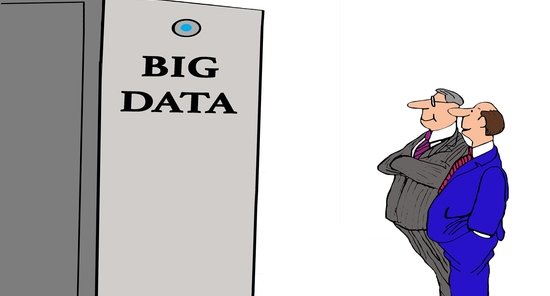I’ve been reading about Big Data’s foray into “Journey Analytics.” Journey analyticsseeks to improve customer experience by collecting data at each point on a customer’s journey and mapping customers’ paths – whether they lead to a purchase or not. The idea is that when you know the steps your customers take in their interactions with you, you can design a better customer experience.
The concept of a customer’s journey is nothing new – we have been offering journey mapping in our customer experience consultancy for years. And linking data points throughout a journey is a step in the right direction.
But I have a big problem with Big Data. Because while Big Data can increasingly show you what your customers do, it cannot show you why they do it. And the ‘why’ must be combined with the ‘what’ to get the insights necessary to make true strides in customer experience.
It’s All About Feelings
Our research has shown that more than half of a customer’s experience is made up ofemotional factors. When customers have positive emotions, they feel good about a company in general, building value. When customers feel negative emotions like anger, irritation or frustration, they might not make a purchase at all, or they might make one but leave with a negative feeling about the company. Either one can destroy value. Big Data can’t see the distinction because it doesn’t measure emotions. It only shows that a sale was completed (success!) or that the customer left without buying (perhaps you need to do something different).
Big Data does provide useful insights in certain contexts. A website with a high bounce rate, for example, might need different marketing copy or more appealing graphics. If people fill up online shopping carts but don’t buy, there may be a problem with the checkout system or shipping rates. But in other contexts, it’s impossible to make real improvements in Customer Experience without taking customer emotions into account.
Let’s take my recent adventure buying a Jeep. Data would tell you that I researched Jeeps fairly extensively online before visiting my local Jeep dealer, and that I test drove a Jeep one day and then made a purchase from that dealer for a certain price just a few days later. This sounds entirely positive from the dealer’s standpoint, apart from the fact that I didn’t buy a Jeep on the first day I visited.
But in fact, my experience negotiating the deal was horrible, I was both furious and frustrated, and I would never buy at that dealership again. But data can’t see this. It only sees another successful Jeep sale.
Data Must Be Combined with Emotional Insights
It’s hard for a business to improve its offerings and its customer experience if it doesn’t understand why customers behave the way they do. Without any insights into emotions, you can’t relieve the true customer pain points.
Think of automated phone answering systems. Customers universally hate them, and it can be frustrating when you need to talk to a real person, but can’t figure out how to reach one. But data can’t see the frustration, and it has no way of knowing what alternate system a customer would prefer. It can see how many customers eventually pressed “0” to reach a human, but it can only guess at why.
The notion that “data speaks for itself” therefore isn’t true. Data is useful, but can only show the actions a customer took at a particular point in time. Real insights come from monitoring and analyzing a customer’s emotions, past experiences and learned behaviors. By pairing these with Big Data, the data truly begins to “speak.”
When we work with clients, we identify their Emotional Signature and couple it with big data to get additional insights into the “why” of customer actions. This is especially useful when customers don’t behave the way a company thinks they should be behaving. Beyond that, we find that it is useful for companies to plan the emotions that should be evoked by marketing materials, websites, customer service representatives, and other points of customer contact.
Mapping your customer experience from an emotional standpoint allows better testing of the experience through Big Data. You can evaluate effectiveness and customer satisfaction and obtain insights on points of success and areas that need improvement. Data combined with insights into minds and thought processes is truly where the future of customer experience lies.
Have you used Big Data in your business? How has it helped you, and what are its limitations? Share your thoughts in the comments box below.
Learn how Customers really make decisions that can’t be seen with your data. Register now for our 3 one hour, on demand, webinars Secrets Of Customer Decision Making. Use promo code DECISION to get all 3 for $50.
If you liked this article, you might also enjoy these:
Remarkable! What Invisible Influence Controls Your Behavior?
Exposed: How to Measure Your Customer’s Loyalty and CX
Unbelievable! Does Car Buying HAVE to be SO Bad?
Colin Shaw is the founder and CEO of Beyond Philosophy, one of the world’s leading Customer experience consultancy & training organizations. Colin is an international author of six bestselling books and an engaging keynote speaker.
Follow Colin Shaw on Twitter @ColinShaw_CX


